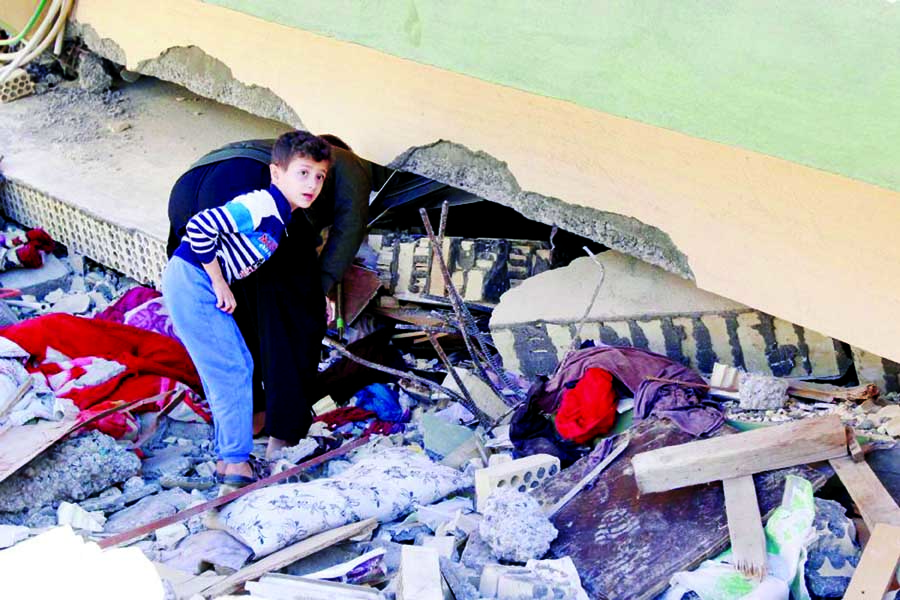
Reuters :
More then 400 people were killed when a magnitude 7.3 earthquake jolted the northern border region between Iran and Iraq on Sunday, state media in the two countries said, and rescuers were searching for dozens trapped under rubble in the mountainous area.
State television said more than 396 people were killed in Iran and more than 7,000 were injured. Local officials said the death toll would rise as search and rescue teams reached remote areas of Iran.
Officials expected the casualty toll to rise when search and rescue teams reached remote areas of Iran.
A quake registering a magnitude between 7 and 7.9 can inflict widespread and heavy damage, Reuters reported.
Moreover, many houses in rural areas of Iran are made of mud bricks that can crumble easily in a quake.
The earthquake was felt in several provinces of Iran but the hardest hit province was Kermanshah, which announced three days of mourning.
The quake also triggered landslides that hindered rescue efforts, officials told state television. At least 14 provinces in Iran had been affected, Iranian media reported.
Iran’s Supreme Leader Ayatollah Ali Khamenei offered his condolences on Monday, urging all government agencies to do all they could to help those affected.
More than 142 of the victims were in Sarpol-e Zahab county in Kermanshah, about 15 km (10 miles) from the Iraq border.
The main hospital of the capital of the county was severely damaged and could not treat hundreds of injured people who were taken there, the head of the Iranian emergency services, Pirhossein Koulivand said.
The U.S. Geological Survey said the quake measured magnitude 7.3. An Iraqi meteorology official put its magnitude at 6.5 with the epicenter in Penjwin in Sulaimaniyah province in the Kurdistan region close to the main border crossing with Iran.
Kurdish health officials said at least four people were killed in Iraq and at least 50 injured.
The quake was felt as far south as Baghdad, where many residents rushed from their houses and tall buildings when tremors shook the Iraqi capital.
Electricity was cut off in several Iranian and Iraqi cities, and fears of aftershocks sent thousands of people in both countries out onto the streets and parks in cold weather.
The Iranian seismological center registered around 50 aftershocks and said more were expected.
The head of Iranian Red Crescent said more than 70,000 people were in need of emergency shelter.
Iranian Interior Minister Abdolreza Rahmani Fazli said some roads were blocked and were worried about casualties in remote villages. The Iranian armed forces have been deployed to help the emergency services.
An Iranian oil official said pipelines and refineries in the area remained intact.
Iran sits astride major fault lines and is prone to frequent tremors. A magnitude 6.6 quake on Dec. 26, devastated the historic city of Bam, 1,000 km (600 miles) southeast of Tehran, killing about 31,000 people.

